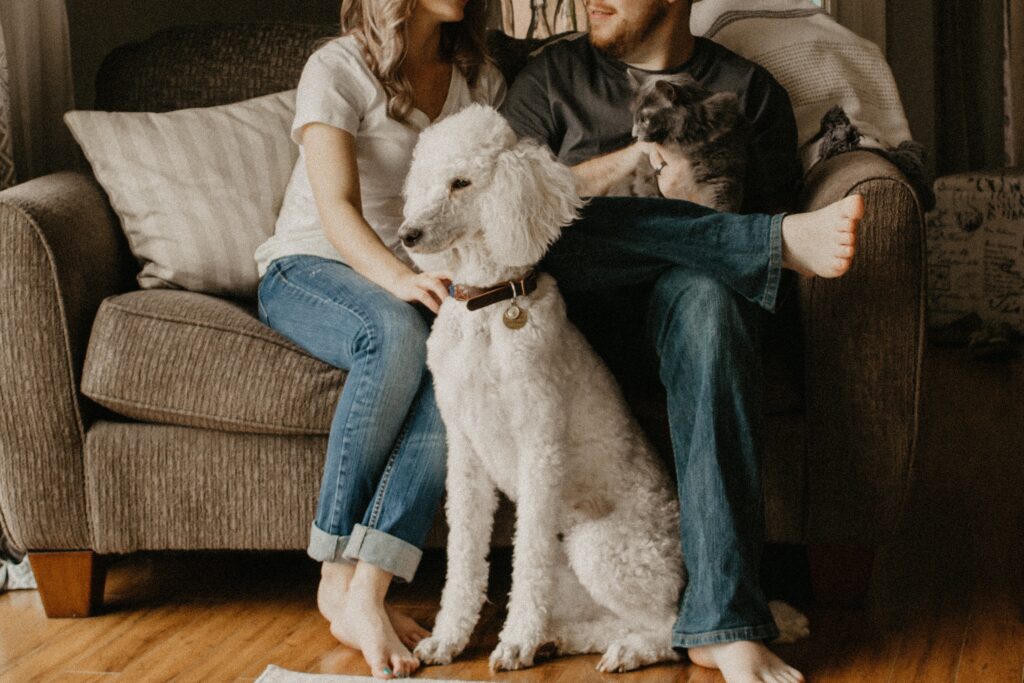Pets provide unconditional love to their owners. They offer needed company and great comfort, especially to those who live alone. The population of pet owners is rising every year. However, several rental properties are still refusing to be pet-friendly.
As a landlord, if you don’t welcome pets in your Milpitas, Castro Valley, or other California rental property, you’re missing the opportunity to increase your income. Accepting pets means that you increase your pool of prospective tenants, collect extra income, have happier tenants and increase your chances of tenants renting long-term.
That said, there are also disadvantages of renting to tenants with pets.
In this post, we will weigh the pros and cons, and explain how you can mitigate the risks of renting to tenants with pets.
Keep on reading!
Benefits of Renting to Tenants with Pets
Here are some benefits of welcoming pets in your rentals:
- You can charge more fees, such as a pet rent, pet deposit or pet fee. Thus, you will increase your income.
- You can have a larger pool of prospective tenants.
- Due to the high demand and lower presence of pet-friendly rentals, tenants with pets tend to continuously renew their lease.
- Tenants are generally happier when they have pets, encouraging them to stay long term. This means fewer rental vacancies for you.
- Renters with pets tend to be more responsible. If they can care for their pet, they can care for your property.

Risks of Renting to Tenants with Pets
Here are some risks of welcoming pets in your rentals:
- Pets may cause property damages, especially if they’re untrained.
- Some pets can have pet-related odors.
- You may have to deal with tenant injuries and harm caused by pets.
- There may be noise disturbances which can cause conflict.
- Some tenants may have sensitivities or allergies to pets. This may result in some tenants leaving the rental.
Now that we’ve equally assessed the advantages and the disadvantages, you need to decide if one far outweighs the other!
Note that there are things you can do to mitigate the risks and maximize the benefits of a pet-friendly rental. Let’s look more into that!
Ways to Deal with the Risks
Here are some ways you can try to mitigate the risks as a pet-welcoming rental:
1. Obtain Pet References
Contact the tenant’s former landlord. Ask questions such as:
- Do they display responsibility when taking care of their pets?
- Did the pet owners maintain the rental unit well?
- If given the choice, would the previous owner accept them as tenants again?
Asking these kinds of questions will allow you to get a better understanding of the pet, their behavior, and the tenant’s control over their pet.

2. Assess the Pet During the Tenant Screening Interview
You can observe the pet during a tenant interview. Not only will this help you get a sense of the pet’s behavior, it will also allow you to assess how much control the tenant has over their pets. See if the pet is obedient and disciplined.
3. Charge a Pet Rent
You can collect a monthly pet rent as protection against potential pet-caused property damage. Make the fee reasonable to avoid discouraging pet owners from renting your space.
4. Don’t Immediately Judge a Dog Based on its Breed
Just like a tenant or renewal screening, meeting the pet before signing the leasing agreement lets you evaluate the pet’s behavior. Some dog breeds are naturally more aggressive than others. But if a pet is well-trained and the owner exercises full control, then it should be worth considering welcoming the pet in your premises.
You can also require pet owners to get renters’ insurance to cover for potential injuries. To help deal with medical costs, insurance can reduce stress. Still, prevention is best and choosing pets who are well trained will be a great way to avoid conflict with other tenants and neighbors.
5. Create a Clear Pet Policy
In your lease, you can outline the following limitations and requirements:
- Size of acceptable pets
- Number of pets you accept per tenant
- Required pet vaccines
- Required pet training
- Pet rent/pet deposit or pet fee amount
- Renters’ insurance
- Type of pets allowed in your rental unit
6. Be Specific in your Pet Addendum
To design your policies, you can craft provisions around these questions:
- What are the conditions for pet maintenance?
- What are the common areas where pets are allowed in the property?
- When must pets wear leashes/in what areas of the rental must they wear their leash?

7. Consider Requiring a Pet to be Spayed or Neutered
When spayed, female dogs can become less aggressive. Thus, there’s less disturbance in your rental home. Similarly, neutered male dogs are known to behave better, which will cause fewer headaches for you.
Bottom Line
As a landlord, opening your rental to pet owners can give you additional income. It makes your property more attractive to prospects and can contribute to tenant loyalty. That said, you also need to be realistic and design restrictions to operate a successful rental property.
If you need additional help, contact East Bay Property Management and Consulting. We’ll help you create effective pet clauses and addendums. We know our way around handling pet-friendly rentals and have proper plans in place.






